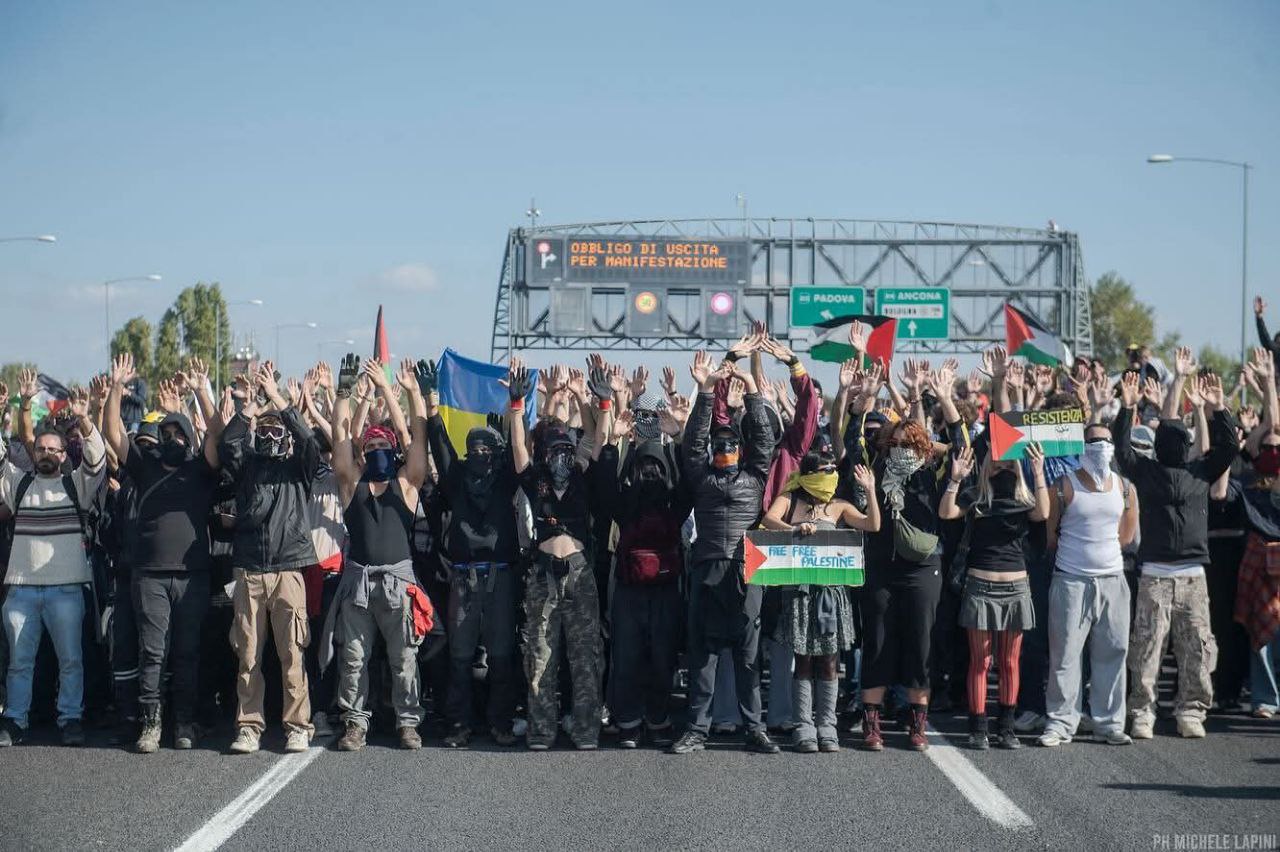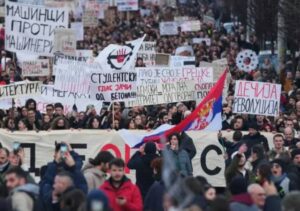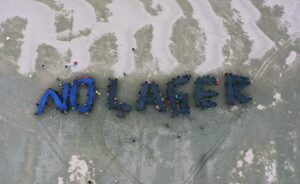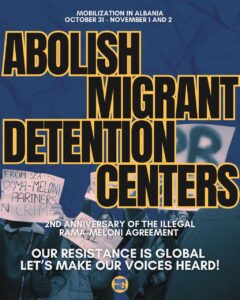Days are only the same if you measure them with linear time, the one that marks the perpetuation of the established order. The week of the Flotilla blockade was a long and a short time, we measured it as a space of opportunity, therefore very short, and as emotional intensity, which is far beyond what the hourglass says. It was an extraordinary week in many ways, in terms of its dimensions, qualities and spin. It was a revolutionary week. Let’s try to see why.
The quantitative dimension: Millions took to the streets and squares, numbers do matter when the accounting has taken a leap in scale. And they did so for dozens of hours, for a week.
The qualitative dimension: Dozens of agitated cities occupied the political scene and blocked urban spaces, extending to stations, ring roads, motorways, ports and airports. And they defended the blockades with increasing levels of resistance. What had to be done has been done.
The quantum leap: The triggering of both dimensions shook the trade union institutions, leading to a general strike from September 22nd to October 2nd, which was biopolitical and social in nature as the fight against genocide is biopolitical and abstaining from work by blocking cities is social.

The Mediterranean and global dimension: The Global Sumud Flotilla has built a networked and multitudinous spatiality, not just a humanitarian mission. This ability to connect subjectivities around the world was the spark that triggered events. It politicised the Mediterranean space, transmuting it from geographical border into a symbolic and material battlefield through a hybrid, heterogeneous and determined international coalition. The GSF managed to be a non-governmental action capable of attacking the Israeli government head-on as well as the Trump-Netanyahu plan, which turned the blockade of aid and hunger into a weapon of war. All this while the United Nations was falling apart or recombining its power structures, depending on the points of views, and while humanitarian workers were being targeted as military targets. Thanks to the Flotilla, the Mediterranean has become a global political space that we have travelled together, from Tunis to Rome, from Amsterdam to Cape Town, highlighting the complicity of governments in the genocide of the Palestinians and freeing us, at least in Europe, from a feeling of powerlessness, leading us to structure the struggle.
The continental dimension: We choose a continental narrative of this week instead of a national one, as continental is what it has been. The GSF blockade became the centre of hundreds of urban activations across Europe: Europe moved, not italy (the lowercase is intentional).The blow we have dealt to the long-standing stability of the Meloni government is, at the same time, a blow to Trump, to all the sovereignties of the continent and, above all, to the balances and cross-vetoes that structure the EU and have so far prevented concrete initiatives for the lives of Palestinians, the application of sanctions and the severing of relations with the Netanyahu government. The European political dimension is being shaped in the urban squares of this week. And Italy, once an anomaly, has become protagonist thanks to the Mediterranean wind telling us it is time to truly change Europe.
The political context, namely peace and war. The struggles spoke of desertion from warfare and extermination, not pacifism. The iconography of station and motorway blockades was colored by the right to resist the war order and the genocidal apparatus. Weapons were not laid down; they were found to defend the blockades, beyond the metaphysics of peace.
One struggle after another, thousands, tens of thousands, millions. It was a revolutionary week because political camps and classic patterns were overturned. For example, the grassroots strike became general and active, and the confederal convocation became unified, not in the convocation itself but in participation. The program of the week was an accumulation of all the struggles, their convergence without the need for synthesis by intergroups. This is thanks to the stratification of the movement and because political generations intersect within it.
One struggle after another: the struggles that have occurred re-emerge, and those that will occur are already appearing now. The movement is simultaneously anti-capitalist, trans-feminist, environmentalist, and anti-colonial. It is not anti-institutional but rather potentially productive of new worlds. How could these dimensions be separated without damaging the genealogy of the movement? It is the offspring, even though without any parental dependence, of the cycles of no global struggles, Fridays for Future, feminist tides, Black Lives Matter… one struggle after another. This is because the struggle against genocide is a struggle for life against the domination of capital, against its arbitrariness, and its intimate murderous will. It is a struggle against the power of speculative funds, against the genocidal economy, against Trump’s reconstruction plan, which in any case would involve, as in US cities, the use of the army to suppress resistance to property rental income.

In just one week, we began to conceive reality as something that can be transformed, and whether we like it or not, this new reality is intertwined with the digital dimension. We have experienced in an accelerated manner how digital storytelling has itself become a terrain of mobilization, and no longer just of promotion: think of the thousands of people who have acted in defense of Francesca Albanese or the disconnected phrases of politicians, transformed in real time into thousands of placards raised in the squares, i.e. “Define… every falsehood you continue to say”. Likewise, the simple information about Israel Premier Tech’s participation in Italian cycling competitions became, within a few hours, a concrete possibility of its exclusion, thanks to the possibility of actually doing as in Madrid was done. And so every city has its own extraordinary stories to tell.
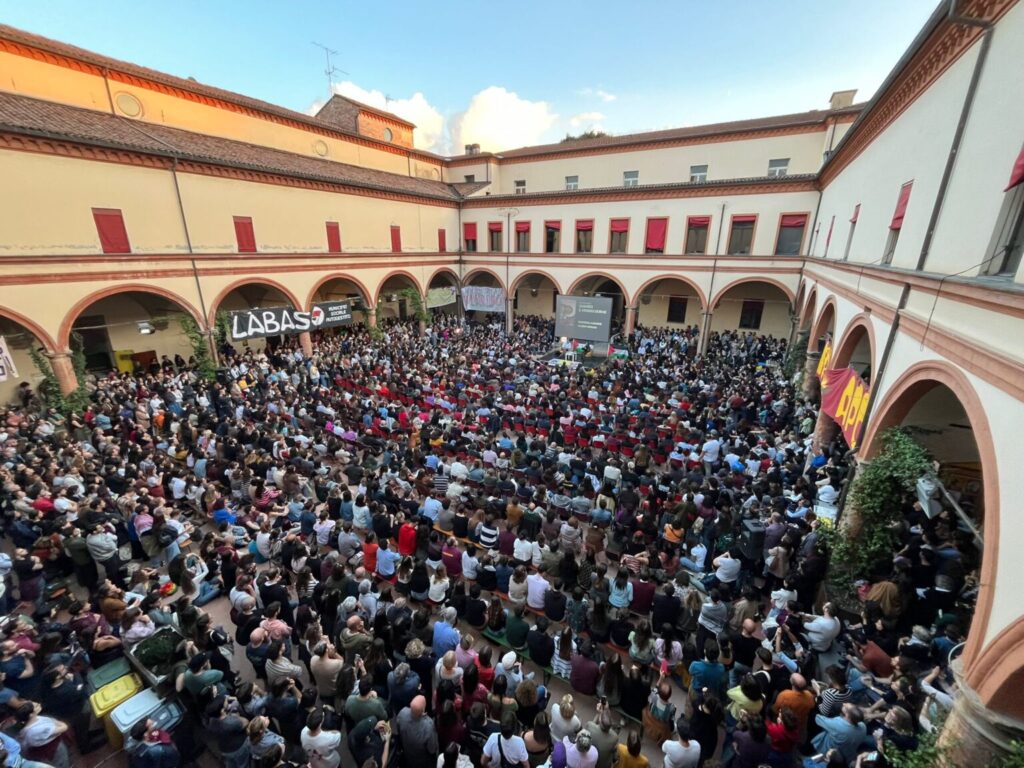

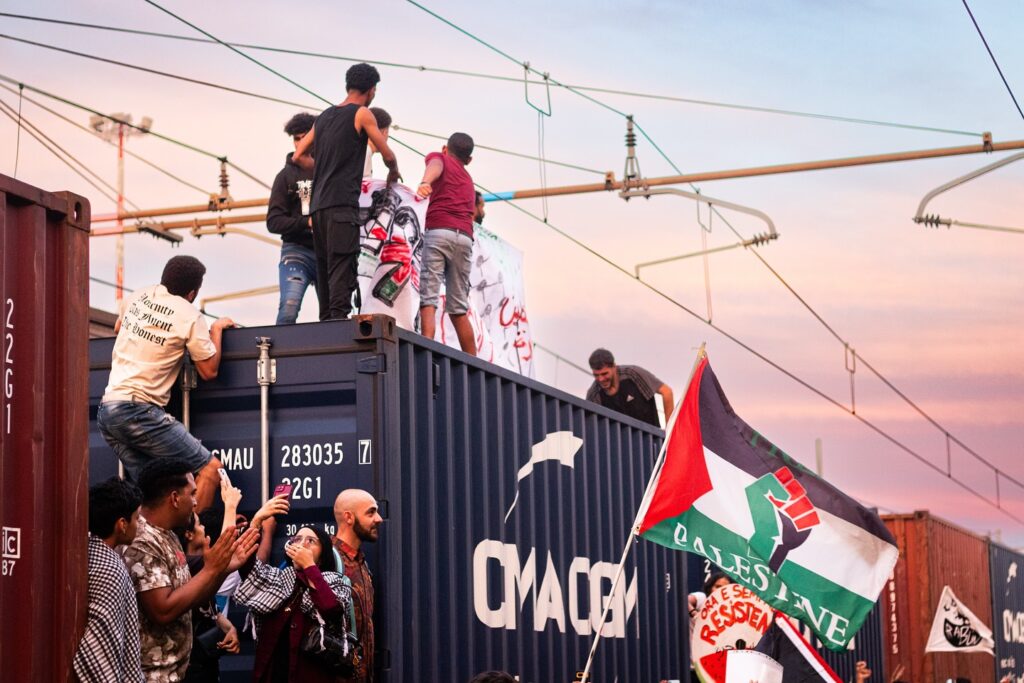
In just one week, we wrote history beyond the algorithm, which is now forced to reposition itself. We built a sort of blockchain of the possible: a chain of irreversible events and decisions, unchangeable blocks that mark a point of no return, from which we can certainly start fresh, getting rid of the frustrated logic of those who measure movements solely according to their final outcome. On October 4th, the crowd in Rome was so large that some people, with the demonstration in its final stages, had not yet left Piramide, where the demonstration started… Try to go and tell them it would have been better if the demonstration had ended this or that, in a confrontational or peaceful manner. The actual question on everyone’s mind was, and still is, how to make that historic day the beginning of something.
Meanwhile, the command has reorganized itself, and we have responded to every reorganization. To tear gas, with goggles, antacids and leather gloves; to police drones, with the first autonomous aerial footage, which makes it impossible to deny the real numbers: 1,096,400 people in the square, as the images show ;-).
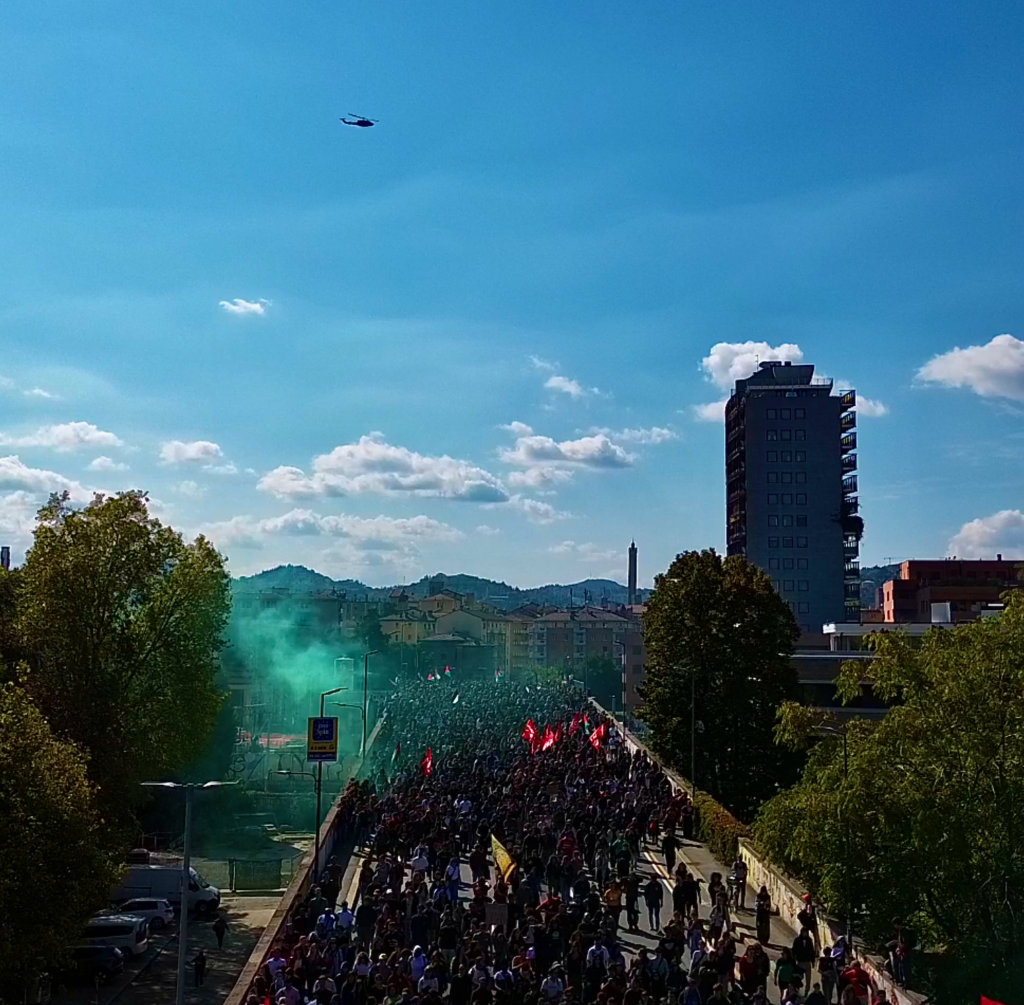

This data raises specific questions on the organizational capacity to be activated in future mobilizations. If command is structured through networks and control infrastructures, as satellites for drone stabilization, fibre optic networks that guarantee continuity of exploitation even during strikes, capital that invests in states to strengthen their stability and therefore their command, then every form of organization deployed in the streets is an integral part of the movement. Every cordon, every convergence truck, every tool for protecting and enhancing collective practices represents a form of material response to the infrastructures of power and already places us on new ground.
This week has brought into play an embryonic but concrete form of convergent organizational autonomy: a tangle of knowledge, tools and will that is not limited to reaction, but opens up the prospect of a permanent organization, capable of engage in conflict, of stand firm and resist. It is on this hypothesis that we should work in the coming months: activating the general intellect, consolidating the infrastructures built over years of work, transforming the power expressed in the recent days into a lasting force, which is capable of measuring itself steadily against the structures of command.
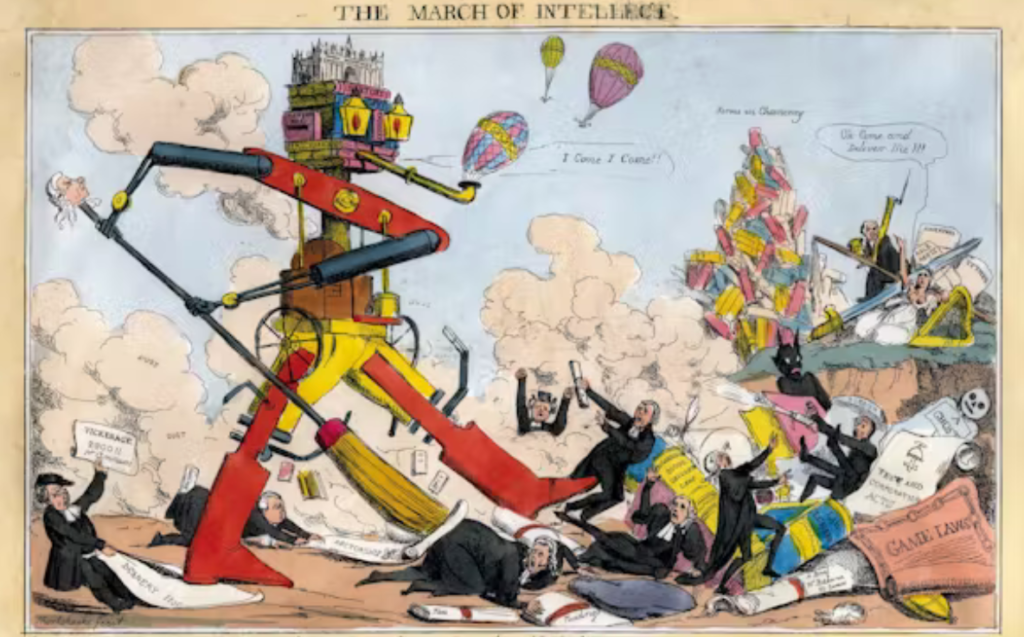
We would like to draw an initial conclusion: a crack has opened up in the anti-elite narrative of the right wing, which finds itself chasing consensus by stirring up the usual specters of social order thanks to the demonstrations of recent weeks. After months of sovereignist discourse dominating public discourse, an internationalist and progressive movement reduces the ego of the right, which finds now that it is less populist than it has perceived itself to be in recent years and less of a majority than the election data suggest. The complex regarding the left’s ability to mobilize returns, despite attempts at slogans of re-migration to have social plans to guarantee the government’s actions. In Italy, the management of public order disavows the crackdown desired by the government with the newborn Security Decree and brings the balance of power back to the center. The right wing becomes once again the direct extension of the elites, the most bloodthirsty of the contemporary era in this case. The repositioning of the general perception of the right wing opens spaces for new anti-hegemonic narratives that are broad and mass-based.
We have been part of a revolutionary week, and the months ahead of us will reveal whether we will succeed in making revolutionary months and subverting the old world. We are now at a turning point in contemporary history, not the first time in the tortuous dialectic of class struggle. It is up to all of us to continue to be intimately revolutionary, not giving hierarchies to the political composition of the movement but keeping broad, just as it is, the interpretation of resistance to the genocidal project, becoming even more continental in practice as well as in words.
One struggle after another, let’s keep fighting!
Municipi Sociali di Bologna
